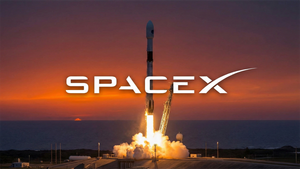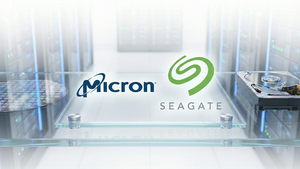
October 7, 2025 – A significant tremor rippled through the technology sector today as Oracle (NYSE: ORCL) issued a stark warning regarding the "razor-thin" profit margins of its burgeoning artificial intelligence (AI) cloud server business. The revelation, which highlighted the high costs associated with providing AI infrastructure, immediately triggered a sell-off in Oracle's shares and sent a palpable chill across the broader semiconductor market. Among the companies feeling the immediate impact was Amkor Technology (NASDAQ: AMKR), a key player in semiconductor packaging and test services, whose stock experienced a decline amidst the market's reevaluation of AI-related hardware investments.
This development has ignited a critical conversation about the true profitability of the massive capital outlays required for advanced AI capabilities, prompting investors to reconsider the financial viability of companies deeply entrenched in the AI supply chain. While the market grapples with this new perspective on AI's economic realities, Amkor Technology finds itself in a unique position, simultaneously facing broader market headwinds and celebrating a monumental strategic expansion that underscores its long-term commitment to the semiconductor industry.
Oracle's Profitability Paradox and the Semiconductor Shake-Up
The catalyst for today's market unease originated from a report by The Information, which unveiled internal Oracle documents detailing alarmingly low gross profit margins within its AI cloud services. Specifically, the report indicated that Oracle's AI cloud server business, heavily reliant on renting out Nvidia (NASDAQ: NVDA)-powered servers, averaged gross profit margins of only about 16% over the past year. This figure stands in stark contrast to Oracle's traditional software business, which typically boasts robust gross margins of around 70%. For the three months ending in August 2025 (Oracle's fiscal Q1 2026), this segment generated approximately $900 million in revenue but yielded a mere $125 million in gross profit, equating to a meager 14% gross margin. The report further suggested that Oracle was reportedly incurring "considerable sums," close to $100 million in losses during the last quarter, primarily due to the exorbitant costs associated with advanced components like Nvidia's Blackwell chips and aggressive pricing strategies in the fiercely competitive cloud market.
The immediate fallout for Oracle was significant, with its stock plummeting between 4.36% and over 7% as investors reacted to the profitability concerns. This warning quickly cascaded into a broader tech-led sell-off, "spooking traders" and sending a "chill through the broader AI trade." The Nasdaq Composite, a bellwether for technology stocks, fell by 0.7%, and the S&P 500 declined by 0.4%, marking an abrupt end to an eight-day rally. Market sentiment shifted defensively, with investors moving away from growth-oriented technology shares towards more stable sectors like utilities, staples, and healthcare.
Amkor Technology (NASDAQ: AMKR), a crucial enabler in the semiconductor ecosystem, was not immune to this widespread nervousness. Its stock declined by 2.6% on October 7, 2025, mirroring the downturn experienced by other semiconductor-related companies, including Amtech (NASDAQ: ASYS), Micron Technology (NASDAQ: MU), Seagate Technology (NASDAQ: STX), Lam Research (NASDAQ: LRCX), Western Digital (NASDAQ: WDC), Photronics (NASDAQ: PLAB), Nova (NASDAQ: NVMI), and FormFactor (NASDAQ: FORM). This collective dip underscores the interconnectedness of the semiconductor supply chain and the immediate sensitivity of hardware providers to signals from major AI infrastructure players like Oracle. However, for Amkor, this market reaction occurred on a day of otherwise significant positive news, as the company had just broken ground on a new $7 billion semiconductor advanced packaging and test services campus in Arizona, a development that had seen its shares jump approximately 5% earlier in the day and had contributed to a remarkable 100.45% surge over the preceding six months, reaching a new 52-week high of $34.10 before closing at $32.12 or $33.30. This juxtaposition highlights the complex forces at play within the semiconductor market.
Winners and Losers in the AI Profitability Reset
Oracle's AI margin warning creates a nuanced landscape of potential winners and losers across the semiconductor supply chain and the broader technology market. The immediate "losers" are undoubtedly companies whose valuations were heavily predicated on the assumption of robust and easily achievable profits from AI infrastructure. This includes cloud providers like Oracle (NYSE: ORCL) themselves, who are now under scrutiny for their aggressive pricing and high operational costs in the AI segment. Their ability to scale profitably will be a key concern for investors.
Semiconductor companies involved in the production of high-end AI chips, while still benefiting from demand, may face increased pressure on pricing and margins from their cloud service provider customers. Chip designers like Nvidia (NASDAQ: NVDA), whose GPUs are central to AI computations, could see their customers push for better terms as profitability becomes a tighter constraint. Equipment manufacturers (e.g., Lam Research (NASDAQ: LRCX), Applied Materials (NASDAQ: AMAT)) and materials suppliers to the semiconductor industry might also experience a slowdown in capital expenditure plans if cloud providers become more cautious about expanding their AI data centers due to profitability concerns. Amkor Technology (NASDAQ: AMKR), as a packaging and test services provider, sits directly in the path of this sentiment shift. While the long-term demand for advanced packaging remains strong due to increasing chip complexity, any slowdown in AI chip production or a push for cost reductions could impact their revenue and margin growth.
Conversely, the "winners" might emerge from this profitability reset. Companies that offer more cost-effective or energy-efficient AI solutions, or those that focus on optimizing AI workloads rather than simply building more raw compute power, could gain an advantage. This might include developers of specialized AI accelerators (ASICs) that offer better performance-per-watt than general-purpose GPUs, or software companies that provide AI optimization tools. Furthermore, companies with diversified revenue streams, less reliant on the razor-thin margins of AI infrastructure, may prove more resilient. For Amkor, its strategic investment in the Arizona campus positions it well for domestic chip manufacturing and advanced packaging, a trend driven by geopolitical factors and supply chain resilience, which could provide a buffer against pure AI-driven market volatility. The long-term demand for advanced packaging, regardless of specific AI profitability concerns, is expected to grow due to the increasing complexity and integration of chips across various applications beyond just AI.
Wider Significance: Reshaping AI Hardware Investment and Supply Chain Dynamics
Oracle's AI margin warning extends far beyond its immediate financial impact, signaling a crucial inflection point in the broader industry's approach to AI hardware investment and supply chain dynamics. This event underscores a growing realization that while the demand for AI compute power is insatiable, the path to profitability for the underlying infrastructure is fraught with challenges. It forces a more pragmatic assessment of the economic models supporting the AI revolution, moving past the initial hype to a focus on sustainable growth. This fits into broader industry trends where the initial gold rush mentality for AI infrastructure is giving way to a more mature phase, characterized by optimization, efficiency, and a sharper focus on return on investment.
The potential ripple effects on competitors and partners are substantial. Other cloud service providers (CSPs) like Amazon Web Services (AWS), Microsoft Azure, and Google Cloud, who are also heavily investing in AI infrastructure, will undoubtedly face increased scrutiny from investors regarding their own AI cloud profitability. This could lead to a re-evaluation of pricing strategies, a push for greater efficiency in data center operations, and intensified efforts to develop proprietary AI chips (like Google's TPUs or AWS's Inferentia/Trainium) to reduce reliance on expensive third-party hardware. For semiconductor companies, this could mean a more diversified customer base as CSPs seek multiple suppliers, or conversely, a consolidation of demand around a few key partners. The emphasis on cost-efficiency could also accelerate the adoption of advanced packaging technologies, where Amkor (NASDAQ: AMKR) is a significant player, as these technologies are crucial for improving performance and power efficiency at the chip level.
Regulatory or policy implications might also emerge if the perceived profitability challenges hinder the pace of AI development or raise concerns about market concentration among a few dominant players who can absorb such costs. Governments, already keen on bolstering domestic semiconductor manufacturing, might intensify incentives for onshore production and R&D, potentially benefiting companies like Amkor with their Arizona expansion. Historically, similar periods of technological exuberance followed by a "profitability check" have occurred in various tech cycles, such as the dot-com bubble or the early days of cloud computing. These periods often lead to a shake-out of less sustainable business models and a renewed focus on fundamental economic principles, ultimately strengthening the industry in the long run. The current situation suggests a similar maturation process for the AI hardware market, where sustainable business models will be prioritized over sheer scale.
What Comes Next: Navigating the Evolving AI Hardware Landscape
The immediate aftermath of Oracle's AI margin warning will likely see continued short-term volatility in semiconductor and AI-related stocks as the market digests the implications of constrained profitability. Investors will be closely watching the upcoming earnings reports of other major cloud providers and semiconductor companies for any further indications of margin pressure or shifts in capital expenditure plans. In the short term, companies like Amkor Technology (NASDAQ: AMKR) may experience fluctuations driven by broader market sentiment rather than their individual fundamentals, despite their strong strategic moves.
Looking further ahead, the long-term possibilities for the AI hardware market remain robust, driven by the undeniable growth in AI applications across all industries. However, this growth will likely be accompanied by a stronger emphasis on efficiency and cost-effectiveness. This could lead to several strategic pivots. Cloud providers might increasingly invest in custom AI chips to optimize performance and reduce reliance on external suppliers, potentially impacting the market share of general-purpose GPU manufacturers. There will also be a heightened focus on software and system-level optimizations to squeeze more performance out of existing hardware, rather than simply throwing more powerful chips at the problem. For semiconductor companies, this means a continued push for innovation in packaging, interconnects, and specialized architectures that can deliver better power efficiency and lower total cost of ownership for AI workloads. Amkor's investment in advanced packaging becomes even more critical in this evolving environment, as it directly addresses the need for higher performance and efficiency in complex AI systems.
Market opportunities will emerge for companies that can offer innovative solutions to improve AI hardware profitability, whether through new chip designs, more efficient cooling systems, or advanced manufacturing techniques. Challenges will include navigating a potentially more competitive landscape where customers are more price-sensitive and demanding. Potential scenarios range from a temporary slowdown in AI infrastructure build-out as companies re-evaluate their strategies, to a longer-term shift towards more specialized and cost-optimized AI hardware solutions. The outcome will depend on how quickly technological advancements can improve the efficiency and reduce the cost of AI compute, and how effectively cloud providers can scale their AI services profitably.
Comprehensive Wrap-up: A Reality Check for the AI Era
Oracle's AI margin warning serves as a significant reality check for the booming artificial intelligence sector, highlighting that the immense demand for AI compute power does not automatically translate into easy profits for the underlying infrastructure providers. The key takeaway from this event is that while AI's transformative potential remains undisputed, the economics of delivering that potential are far more complex and challenging than previously assumed. The "razor-thin" margins in Oracle's AI cloud server business underscore the high costs of advanced chips and the aggressive pricing pressures in a competitive market.
Moving forward, the market will likely adopt a more discerning approach to AI-related investments. Pure top-line growth in AI infrastructure will be scrutinized alongside profitability metrics. This shift will favor companies that can demonstrate not only technological prowess but also a clear path to sustainable, profitable growth. For the semiconductor industry, this means an intensified focus on efficiency, cost optimization, and innovative packaging solutions that can deliver more performance per watt and lower the overall cost of AI systems. Companies like Amkor Technology (NASDAQ: AMKR), with their strategic investments in advanced packaging and domestic manufacturing capabilities, are well-positioned to meet these evolving demands, even as they navigate the broader market's re-evaluation of AI's financial landscape.
Investors in the coming months should watch for several key indicators: the profitability reports of other major cloud service providers, any adjustments in capital expenditure plans by tech giants, and the continued pace of innovation in specialized AI hardware and packaging technologies. While the immediate reaction has been a market correction, this period of recalibration could ultimately lead to a more robust and sustainable AI ecosystem, built on a foundation of sound economic principles rather than speculative enthusiasm. The long-term trajectory of AI remains upward, but the journey to get there will demand greater financial discipline and strategic foresight from all players in the value chain.
This content is intended for informational purposes only and is not financial advice





